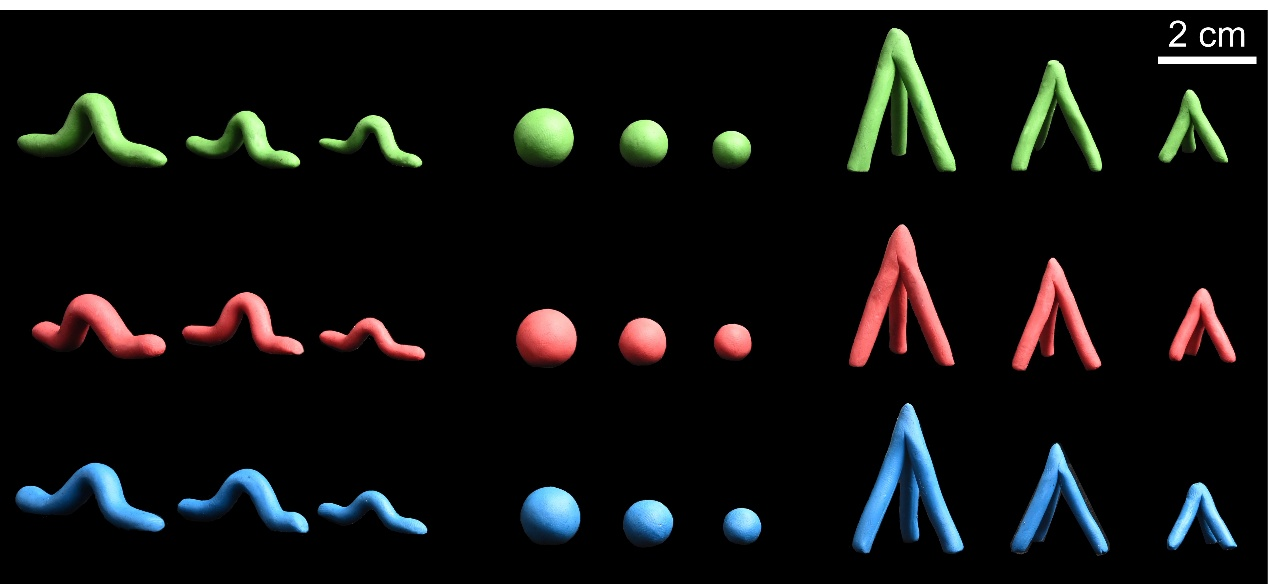Name:CHEN Sichong
Tell:
Email:chensichong@wbgcas.cn
Organization:Wuhan Botanical Garden
Researchers Reveal Human-centric Bias from a Typical Ecological Experimental Design
2025-10-22
Would green clay in caterpillar shapes look tasty to insect-feeding animals? Humans might assume so. Ecologists sometimes set plasticine models mimicking natural prey, such as caterpillars, fruits, bird eggs, snakes, and frogs, and record attack marks left on them to estimate biotic interactions, specifically predation. This experimental design is widely applied due to its cost-effectiveness and simplicity of application. But what if our assumption that plasticine caterpillars look“tasty”to an animal is a little...human-centric?
Despite the wide application of plasticine models, an underlying assumption is that animals can visually recognize and respond to models that visually resemble real prey. However, animals rely on a combination of sensory cues, such as olfaction and prey movement, to guide their foraging. Plasticine models, by their very nature, lack these important features. Consequently, a comprehensive assessment of the reliability of plasticine models in reflecting real biotic interaction patterns is still lacking.
New research from the Wuhan Botanical Garden of the Chinese Academy of Sciences addresses the limitations of plasticine models, showing that they might not be telling the whole ecological story of biotic interactions.
"We' ve been making a big assumption," explains Professor CHEN Sichong, the study's corresponding author.“When an animal 'attacks' a plasticine model, they may not genuinely identify it as the real prey and just simply investigate an unusual object.”
To test this, researchers deployed a large experiment-setting 2,430 plasticine models in a temperate mixed forest (Dongzhai, Henan) and a tropical moist forest (Xishuangbanna, Yunnan). Plasticine models were designed in different colours, shapes, and sizes, including those resembling typical prey in natural forests, as well as models with characteristics that rarely exist in natural organisms.
"We observed imprints from invertebrates, birds, and mammals on the plasticine models,”says Prof. CHEN. "Surprisingly, the attack rates were similar across models, regardless of their colours, shapes, or sizes. For instance, the novel tripod-shaped models recorded a comparable number of animal imprints to the caterpillar-shaped and fruit-shaped models.”
This pattern was consistent across animal guilds, experimental biomes, and seasons. The findings showed that animals may not effectively distinguish artificial models as targeted prey based only on visual cues. Many attack marks on the models may result from exploratory behaviours of various animals, rather than a definitive identification of prey type. This study indicates that plasticine models may not accurately quantify specific types of biotic interactions, as many "attacks" might not be driven by true predatory intent.
Experiments designed from a human perspective of nature may not accurately or effectively reflect ecological processes. Researchers revealed such a case in the application of plasticine models to quantify biotic interactions. More broadly, it highlights the need to understand nature beyond human-centric perspectives.
This research has been published in Proceedings Royal Society B: Biological Science, entitled "Humans perceive but animals don' t: Pitfalls in using plasticine models for assessing biotic interactions". It was supported by the National Natural Science Foundation of China and the Chinese Academy of Sciences.

Plasticine models in different designs were widely applied to assess biotic interaction. a. Roslin et al. (2017, Science) applied plasticine models to assess biotic interactions across the world;b. Ni et al. (2024, Science) applied stonefly models to test the effect of forest deforestation on the evolution of insect body coloration;c. plasticine eggs were used to estimate nest predation (Purger et al., 2022); d–f. Vertebrate models with different colour patterns were used to investigate the effects of appearance traits on predation intensity (Duchesne et al., 2022; Saporito et al., 2007; Guidi et al., 2021).

Designs of the plasticine models in the experiment (Photo by HUANG Xiao)

Attack marks observed on plasticine models. Invertebrate attack marks were generally small slits e.g., (a)–(d). Birds leave sharp marks by beaks e.g., (e)–(h). Mammals attack plasticine models with teeth and claws e.g., (i)–(o). Dongzhai: (a)–(c), (e), (f) and (i)–(l). Xishuangbanna: (d), (j), (h) and (m)–(o) (Photos by HUANG Xiao)